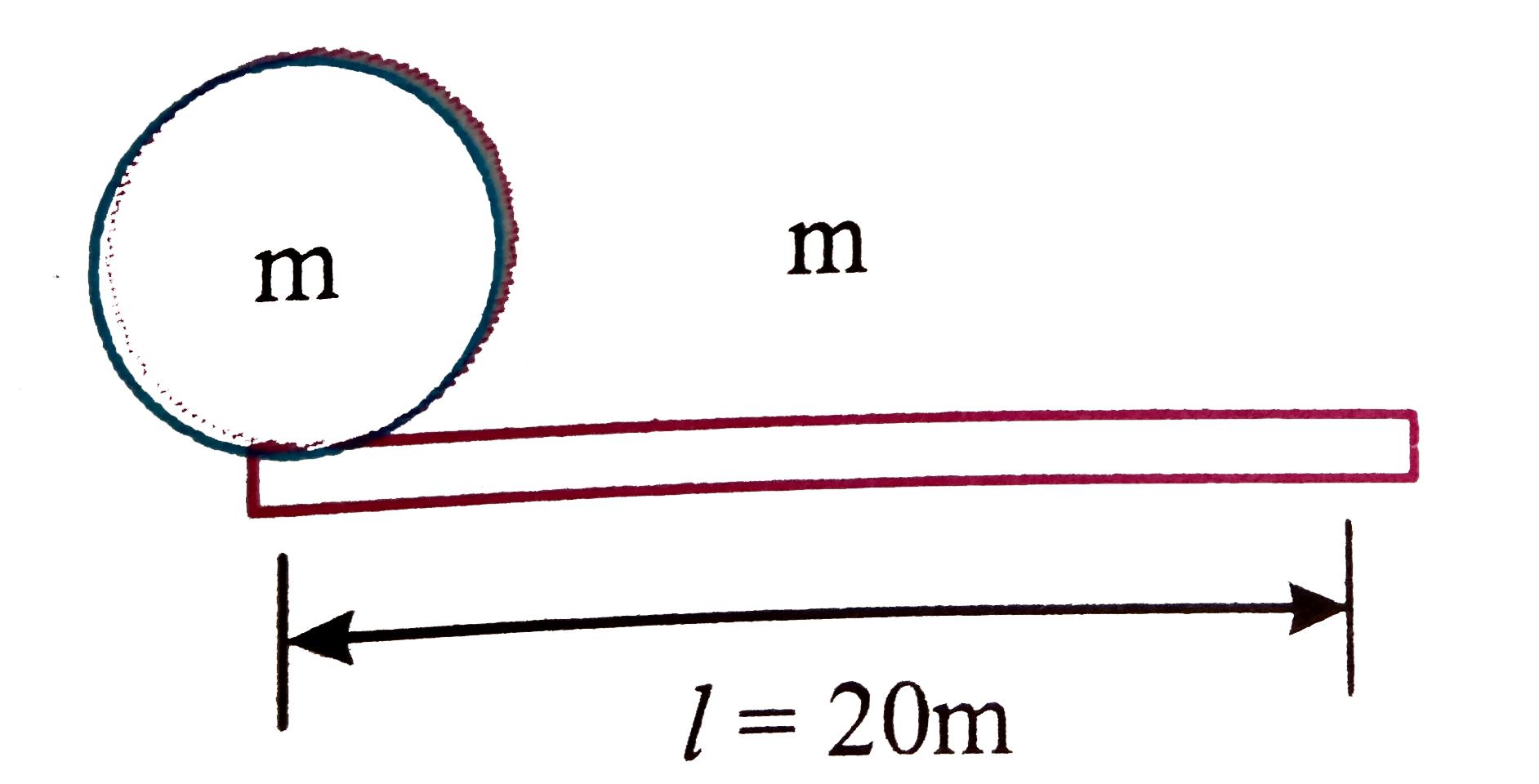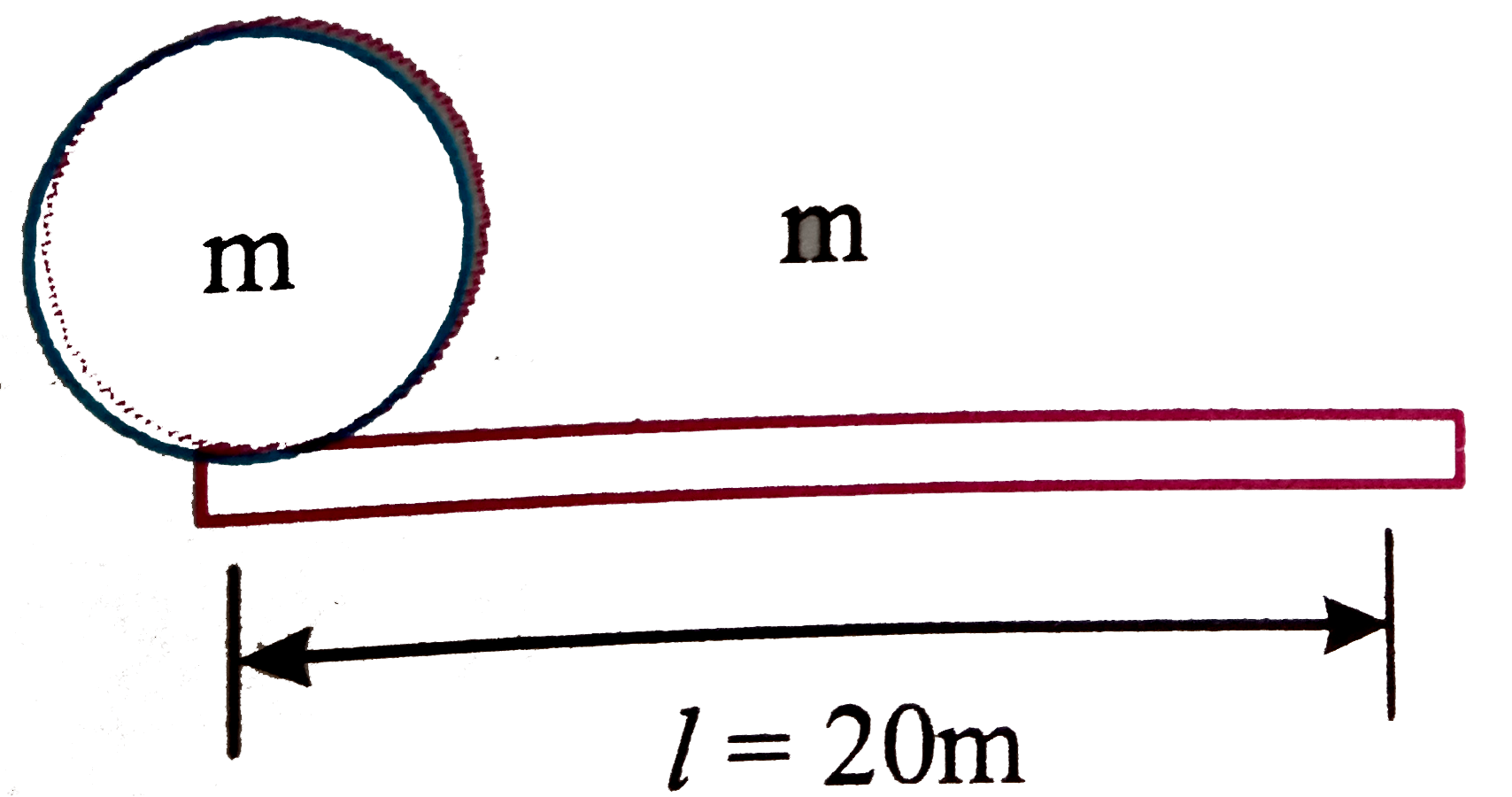Two balls A & B of mass m1 and m2 are kept on a horizontal smooth surface. A is given a velocity towards B so that they perform head on collision
If m1=m2 and collision is elastic. A stops and B moves with the velocity of A after collision
Impulses on A and B during collision are same in magnitude whether it is elastic or inelastic collision
Impulses on A and B collision are equal in magnitude only if m1=m2
If m1>m2, though impulses are same in magnitude velocity of A is still the same direction.
The correct Answer is:A, B, D
Impulse exist in action reaction pair during collision so magnitude will remain the same.
(a) Elastic collision principle
(b) Internal force
(c) If m1>>>m2
Direction of velocity of motion does not change
→v1(1+e)→vc=e→v1(→vc≈→v1)
→v1=→vc
Topper's Solved these Questions
- TEST PAPERSBOOK - FIITJEECHAPTER - TEST PAPERSEXERCISE - PHYSICS
747 Videos
- SIMPLE HARMONIC MOTIONBOOK - FIITJEECHAPTER - SIMPLE HARMONIC MOTIONEXERCISE - Assignment Problems (Objective) (Level-II)
20 Videos
- WORK, ENERGY AND POWER BOOK - FIITJEECHAPTER - WORK, ENERGY AND POWER EXERCISE - COMPREHENSIONS ( Comprehension-II)
5 Videos
Similar Questions
Three balls A,B and C each of mass m and same size,are placed along same line on smooth horizontal surface.A is given a velocity u towards B as shown.If coefficient of restitution for collision between A and B is 12 and between B and C is 13.Assuming all the collisions to be head on choose the correct options: (A) Final velocity of A is u4, (B) Final velocity of B is u4 (C) Final velocity of C is u2, (D) Total energy loss is 516mu2
View SolutionTwo blocks A and B of masses m and 2m are placed on a smooth horizontal surface. Block B is given a speed of 3m/s. Find
(i) The maximum speed of A
(ii) The minimum speed of B.

View Solution
Knowledge Check
A plank of length 20m and mass 1kg is kept on a horizontal smooth surface. A cylinder of mass 1lg is kept near one end of the plank. The coefficient of friction between the two surface is 0.5. The plank is suddenly given a velocity 20m/s towards left

Which of the following statements is correct ?Ainitial acceleration of cylinder is 5m/s2 towards leftBinitial acceleration of cylinder is 5m/s2 towards rightCinitial acceleration of cylinder is 10m/s2 towards rightDinitial acceleration of cylinder is 10m/s2A plank of length 20m and mass 1kg is kept on a horizontal smooth surface. A cylinder of mass 1lg is kept near one end of the plank. The coefficient of friction between the two surface is 0.5. The plank is suddenly given a velocity 20m/s towards left

Which of the following statements is correct?Apure rolling of cylinder takes place immediatelyBinitially cylinder slips and then pure rolling beginsCpure rolling never beginsDthere is no lose in kinetic energy during its entire motion.Two balls marked 1 and 2 of the same mass m and a third ball marked 3 of mass M are arranged over a smooth horizontal surface as shown in the figure. Ball 1 moves with a velocity v1 towards ball 2. All collisions are assumed to be elastic. If M<m, the number of collisions between the balls will be.
 A1B2C3D4
A1B2C3D4
Two blocks A and B of masses m and 2m are placed on a smooth horizontal surface. Block B is given a speed of 3m/s. Find
(i) The maximum speed of A
(ii) The minimum speed of B.

View Solution(i) Three balls 1, 2 and 3 lie on a smooth horizontal table. Ball 1 is given a velocity towards ball 2. Kinetic energy given to ball 1 is k0. It collides with 2 and in turn ball 2 hits ball 3. All collisions are head on elastic. Masses of the balls are m, M and m respectively.

(a) Calculate the kinetic energy (k3) of ball 3 after ball 2 hits it.
(b) Draw the variation of k3 as a function of M.
(ii) Consider 10 balls laid on a smooth surface with masses m,m2,m4,m8......m512 and first ball is pushed towards the second with kinetic energy k0. [All collisions are elastic and head on]. The kinetic energy acquired by the last ball is k10. In a separate experiment the 10th ball is pushed towards 9th ball with kinetic energy k0. This time the kinetic energy acquired by 1st ball is k1.
Compare k10andk1

View SolutionTwo blocks of masses m1 and m2 interconnect with a spring of stiffness K, are kept on as smooth horizontal surface. Find out the ratio of velocity, displacement, kinetic energy and acceleration block with mass m1 of block with mass m2.
View SolutionTwo blocks of masses m1 and m2 interconnect with a spring of stiffness K, are kept on as smooth horizontal surface. Find out the ratio of velocity, displacement, kinetic energy and acceleration block with mass m1 of block with mass m2.
View SolutionTwo balls marked 1 and 2 of the same mass m and a third ball marked 3 of mass M are arranged over a smooth horizontal surface as shown in the figure. Ball 1 moves with a velocity v1 towards ball 2. All collisions are assumed to be elastic. If M<m, the number of collisions between the balls will be.

View Solution
